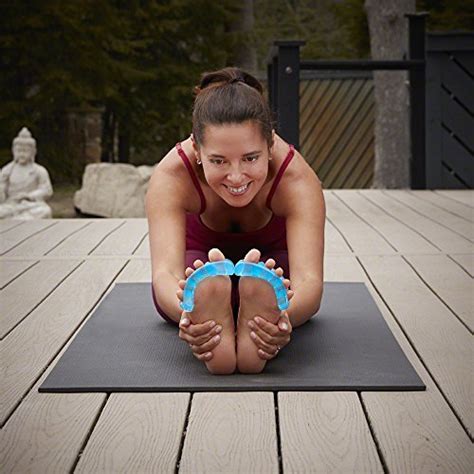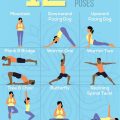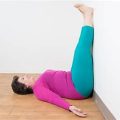Discover If Yoga is Right for You: A Comprehensive Quiz and Guide
Yoga has become one of the most popular wellness practices around the globe. Whether you’re looking to boost your physical health, mental clarity, or emotional well-being, yoga offers a holistic approach that could fit into your lifestyle. However, it’s not a one-size-fits-all solution, and understanding if it’s the right choice for you is essential. This guide, along with a quick quiz, will help you assess whether yoga aligns with your personal goals, preferences, and needs. Let’s dive deeper into the world of yoga to discover how this practice might or might not be your next big thing.
Key Concepts: Understanding Yoga’s Core Elements
Before diving into whether yoga is right for you, it’s important to grasp the key concepts of yoga practice. Yoga combines physical postures (asanas), breath control (pranayama), and meditation (dhyana) to promote physical, mental, and emotional balance. The practice ranges from gentle, restorative poses to vigorous, strength-building routines, offering something for every fitness level.
- Asanas: The physical poses that help with flexibility, strength, and alignment.
- Pranayama: Breathing techniques that enhance energy flow and mental focus.
- Dhyana: Meditation techniques used for calming the mind and achieving mindfulness.
Understanding these three elements can help determine how yoga might fit into your personal fitness and wellness journey. But yoga is not just about postures—it’s also a philosophy and lifestyle that encourages mindfulness, balance, and inner peace.
Historical Context: Yoga’s Evolution from Ancient Practice to Modern Wellness
Yoga has a rich history that stretches back thousands of years to ancient India. Originally part of religious and philosophical traditions, yoga was practiced as a way to achieve spiritual enlightenment. Over time, yoga evolved, and in the 20th century, it began gaining popularity in the West as a form of physical exercise and stress relief.
Key historical milestones:
- 2000 BCE: Early forms of yoga appear in the Indus Valley Civilization.
- 500 BCE: Development of classical yoga with texts like the Yoga Sutras of Patanjali.
- Late 19th-20th Century: Yoga enters Western consciousness, primarily as a health practice.
- 21st Century: Yoga becomes a mainstream practice worldwide, blending ancient traditions with modern science.
This evolution shows how adaptable yoga is to different cultures, belief systems, and health practices. However, it also raises questions about how the modern practice differs from its original intent.
Current State Analysis: Where Yoga Stands Today
Yoga is now widely practiced across the globe, with various styles and approaches available to meet diverse needs. From traditional Hatha Yoga to more modern variations like Power Yoga and Yoga Nidra, individuals can choose practices that align with their fitness levels and wellness goals.
Here’s a quick breakdown of some of the most popular styles:
| Yoga Style | Key Features | Best For |
|---|---|---|
| Hatha Yoga | Focuses on basic postures and breathing exercises | Beginners, relaxation |
| Vinyasa Yoga | Flow-based, dynamic, linking breath to movement | Cardio enthusiasts, intermediate level |
| Ashtanga Yoga | Rigorous, disciplined practice with a set sequence of postures | Advanced practitioners, strength building |
| Bikram Yoga | Performed in a heated room, focuses on detoxification and flexibility | People looking for a physical challenge |
| Yin Yoga | Slow-paced, passive postures held for longer periods | Flexibility, mental calmness |
The growth of online platforms and virtual classes has also made yoga more accessible than ever before. However, despite its popularity, yoga is not without its challenges. Issues like accessibility, cultural appropriation, and misconceptions about what yoga truly entails persist.
Practical Applications: How Yoga Can Benefit You
Yoga offers a variety of benefits that can help people of all ages and fitness levels. Depending on your goals, yoga can be tailored to address specific needs, whether you’re seeking physical fitness, stress management, or spiritual growth.
- Physical Benefits: Improved flexibility, strength, and balance.
- Mental Benefits: Enhanced focus, reduced stress, and better mental clarity.
- Emotional Benefits: Greater self-awareness and emotional regulation.
To decide whether yoga is right for you, it’s essential to align these potential benefits with your personal health and wellness goals. For instance, if you’re seeking a high-intensity workout, certain types of yoga may not provide the desired results. However, if you’re looking for a balanced practice that integrates mind, body, and spirit, yoga may be an excellent fit.
Case Studies: Yoga in Action
Let’s take a closer look at how yoga has benefited people with different goals and backgrounds:
| Case Study | Goal | Outcome |
|---|---|---|
| Office Worker | Reduce back pain and improve posture | After 6 months of practicing Hatha Yoga, the individual reported significantly less back pain and better posture at work. |
| Stressed Parent | Lower stress and improve emotional balance | By incorporating 20 minutes of daily Yoga Nidra, this parent found a way to decompress, reduce anxiety, and improve sleep. |
| Athlete | Improve flexibility and prevent injury | Regular Vinyasa Yoga sessions helped the athlete increase flexibility and maintain peak performance during training. |
Stakeholder Analysis: Who Stands to Gain from Yoga?
Yoga appeals to a wide range of people for various reasons. Let’s break down the key stakeholders:
- Beginners: Those looking to start a gentle fitness routine or improve mental health.
- Advanced Practitioners: People who are dedicated to improving their physical prowess and spiritual growth.
- Healthcare Providers: Doctors, physical therapists, and mental health professionals who recommend yoga as part of a holistic treatment plan.
- Corporate Wellness Programs: Employers integrating yoga to improve employee health and productivity.
- Yoga Studios and Instructors: Key providers who help deliver customized yoga practices to different populations.
Implementation Guidelines: How to Incorporate Yoga into Your Life
Here’s a step-by-step guide to help you incorporate yoga into your daily routine:
- Assess Your Goals: Start by clarifying your reasons for wanting to practice yoga. Are you seeking flexibility, mental clarity, stress reduction, or fitness?
- Choose the Right Style: Based on your goals, select a style of yoga that suits your needs.
- Start Small: Begin with shorter, simpler routines that you can build upon as you grow more comfortable.
- Find a Teacher or Online Class: Consider taking guided classes, either in-person or online, to ensure proper form and avoid injury.
- Create a Consistent Routine: Aim for consistency over intensity. Even 15 minutes a day can offer significant benefits over time.
Ethical Considerations: Balancing Tradition and Modernity
While yoga has been embraced by many cultures outside of its origins, there are ethical issues to consider, including the commercialization and cultural appropriation of the practice. Practitioners should aim to respect the roots of yoga, understanding its spiritual aspects and not reducing it solely to physical exercise.
Additionally, instructors should be mindful of accessibility and inclusivity, ensuring that yoga is welcoming to people of all body types, abilities, and backgrounds.
Limitations and Future Research
Although yoga is widely regarded as a beneficial practice, it is not without limitations. Some individuals, especially those with certain medical conditions or physical limitations, may find some poses challenging or even risky. Further research is needed to explore the long-term benefits of different styles of yoga, as well as its potential applications in mental health treatment and chronic disease management.
Areas for future research:
- The role of yoga in managing chronic conditions like arthritis or diabetes.
- Long-term mental health benefits of yoga, particularly in treating anxiety and depression.
- Yoga’s impact on workplace productivity and stress reduction.
Expert Commentary: Diverse Perspectives on Yoga’s Role in Wellness
According to Dr. Jane Matthews, a yoga researcher and wellness expert, “Yoga offers a multifaceted approach to health. While it’s excellent for improving flexibility and mental focus, the real magic happens when individuals embrace the deeper aspects of mindfulness and self-awareness.”
On the other hand, Mark Lewis, a fitness coach, notes, “While yoga can be a great supplement to strength training, it’s not a replacement for traditional resistance exercises. It’s important to understand that yoga’s benefits vary based on the individual’s goals and current fitness level.”
Overall, yoga’s flexibility and adaptability make it an accessible practice for most, but it’s essential to approach it with the right mindset and expectations. Whether it’s for physical fitness, mental clarity, or emotional balance, yoga provides a holistic path for those ready to commit to it. The key is finding a style and routine that works for your unique needs and goals.








